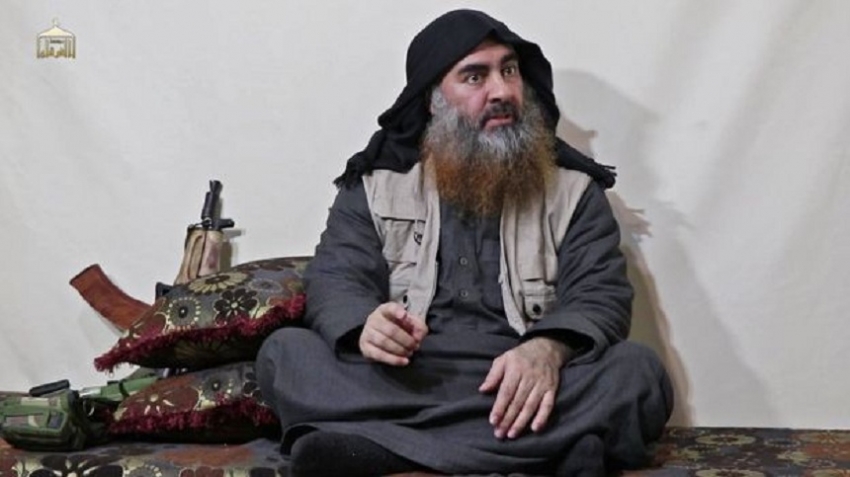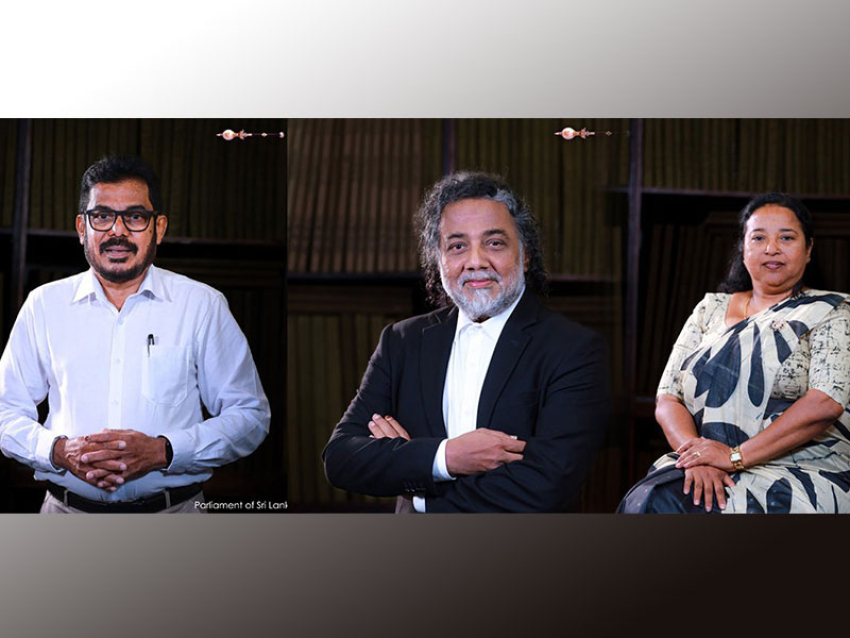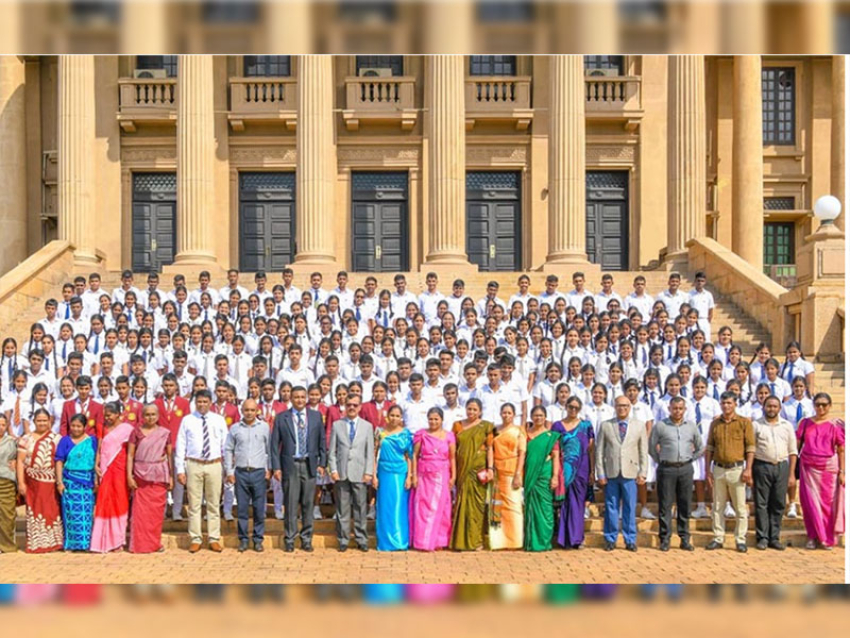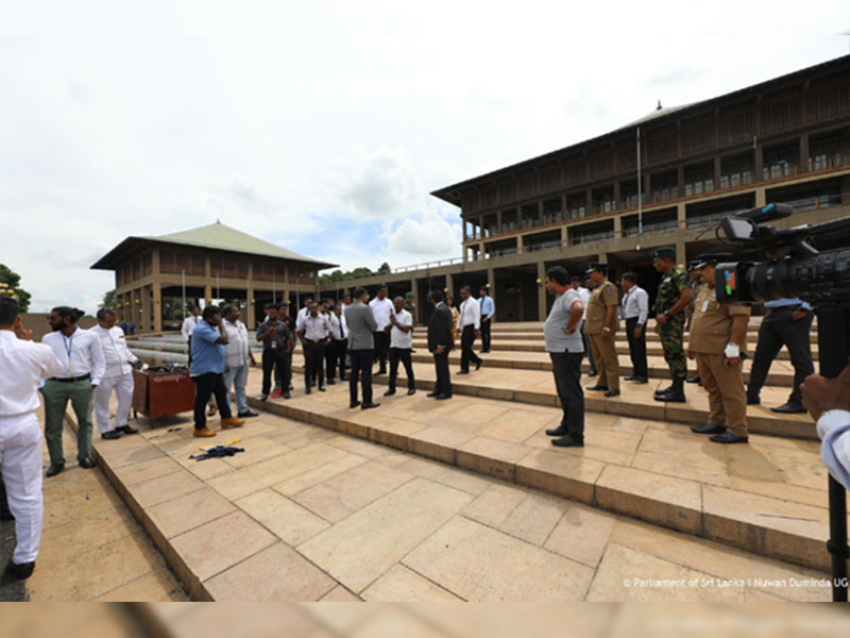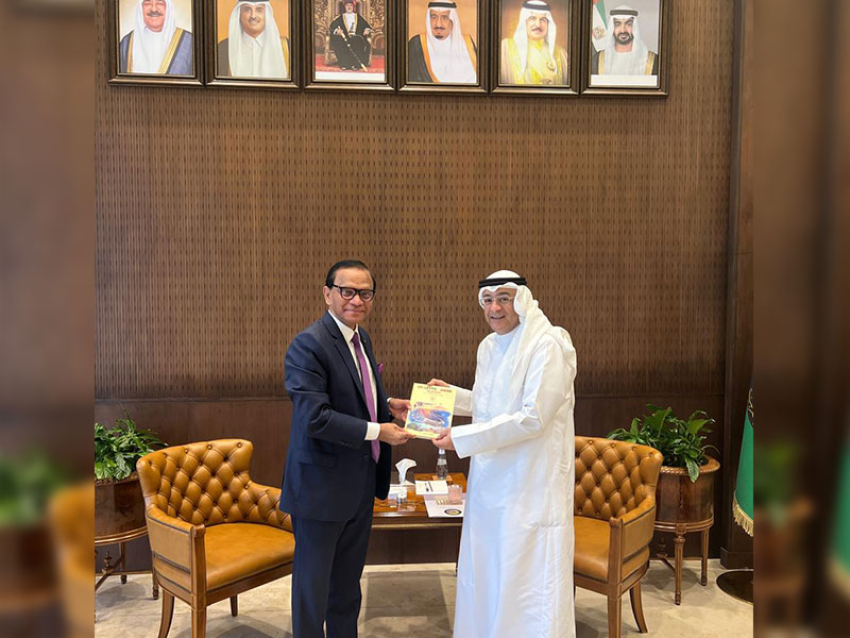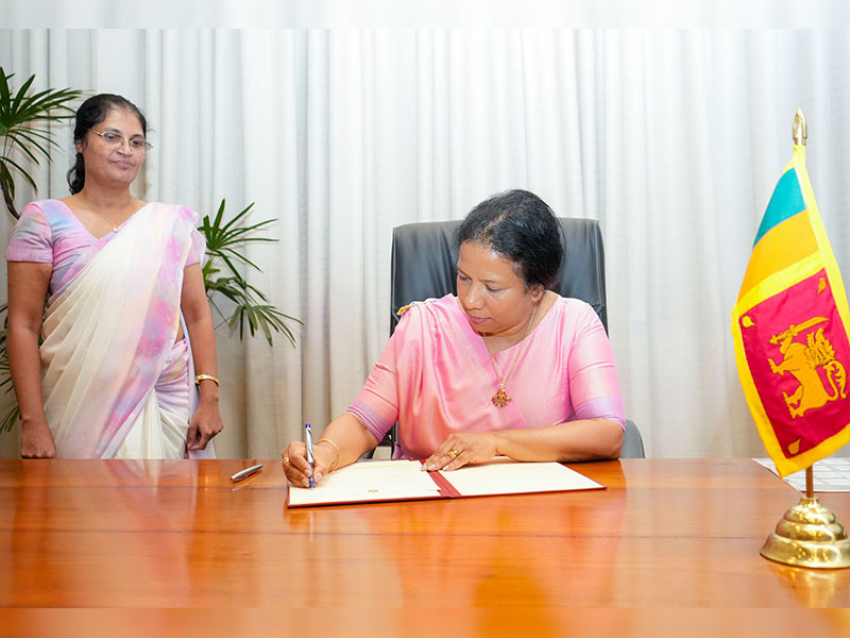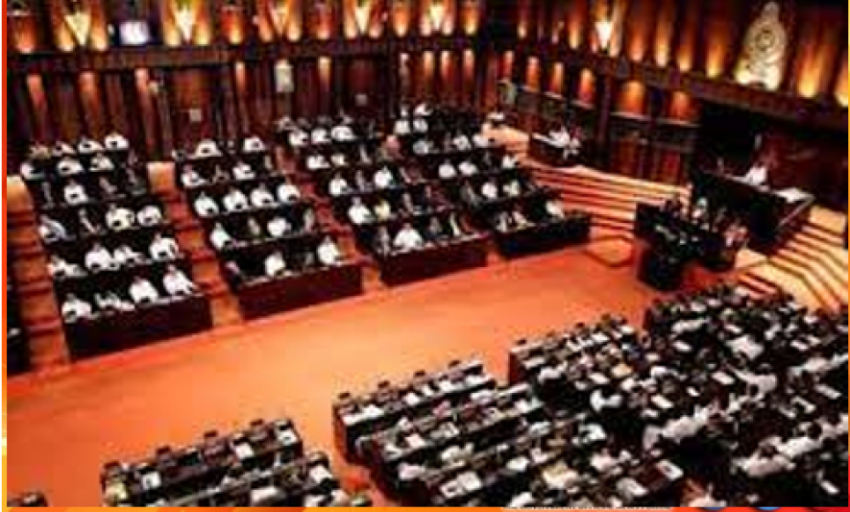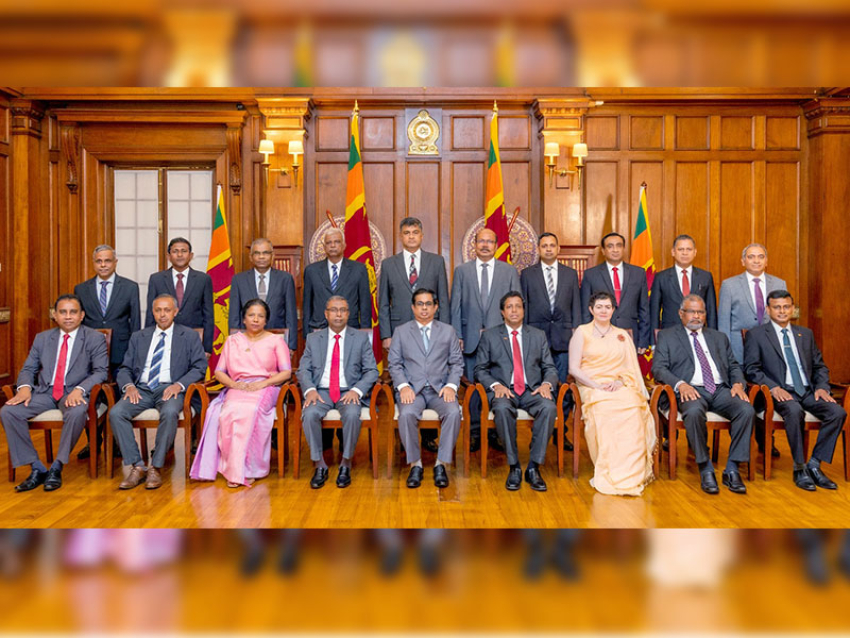The fugitive leader of the Islamic State (IS) group killed himself during a US military operation in north-west Syria, President Donald Trump has said.Speaking from the White House, Mr Trump said Abu Bakr al-Baghdadi detonated his suicide vest after fleeing into a tunnel, chased by US military dogs.Baghdadi came to prominence in 2014, when he announced the creation of a "caliphate" in areas of Iraq and Syria.IS carried out multiple atrocities that resulted in thousands of deaths. The jihadist group imposed a brutal rule in the areas under its control and was behind many attacks around the world. Although the US declared the "caliphate" defeated earlier this year, IS militants remain active in the region and elsewhere. Baghdadi's death is a major victory for Mr Trump as he faces heavy criticism for his decision to pull US troops out of northern Syria and fights an impeachment inquiry launched by Democrats.
In an unusual Sunday morning statement, Mr Trump described the night-time operation in extraordinary detail, saying Baghdadi ran into a dead-end tunnel, "whimpering and crying and screaming", while being chased by military dogs.Baghdadi killed himself and three of his children by igniting his suicide vest, Mr Trump said, causing the tunnel to collapse. No US personnel were killed but one of the dogs was seriously injured in the explosion.The blast mutilated Baghdadi's body but, according to the president, an on-site DNA test confirmed his identity. The special forces spent two hours in the area and gathered "highly sensitive material"."The thug who tried so hard to intimidate others spent his last moments in utter fear, in total panic and dread, terrified of the American forces bearing down on him," Mr Trump said.Also on Sunday, the Kurdish-led Syrian Democratic Forces (SDF) said IS spokesman Abu al-Hassan al-Muhajir, described as Baghdadi's right-hand man, had been killed in a separate joint operation with the US military near the northern Syrian town of Jarablus.
The location - the village of Barisha in Idlib province near the Turkish border - was far from where Baghdadi had been thought to be hiding along the Syria-Iraq border. Many parts of Idlib are under the control of jihadists opposed to IS but rival groups are suspected of sheltering IS members.Baghdadi had been under surveillance for "a couple of weeks" and "two or three" raids had been cancelled because of his movements, Mr Trump said, describing the IS leader's move to Idlib as part of a plan to rebuild the group.An undisclosed number of forces targeted the compound using eight helicopters, which were met with gunfire, Mr Trump said. The commandos managed to land safely and entered the building by blowing holes in the wall, avoiding the main door which was believed to be booby-trapped."He was a sick and depraved man," Mr Trump said. "He died like a dog, he died like a coward."US National Security Adviser Robert O'Brien said Baghdadi's remains should be given the same treatment applied to those of former al-Qaeda leader Osama bin Laden, whose body was buried at sea after he was killed in a raid in 2011.
A "large number" of Baghdadi's followers also died while others were captured, the president said. The dead included two of Baghdadi's wives who were both found wearing explosive vests that were not detonated.Eleven children were removed, uninjured, from the compound.The SDF - one of the main US allies in northern Syria until Mr Trump withdrew US troops from the area this month - said they had shared details about the location of high-level IS members, including Baghdadi. Iraqi officials also said they had provided "accurate information".Mr Trump praised them all, as well as Russia - which opened up the airspace it controls for the operation - Turkey and Syria for giving "certain support" to the operation. He said Russia had not been told about the nature of the US mission.After the president's address, the White House released pictures said to be of Mr Trump watching the operation from the Situation Room surrounded by Vice-President Mike Pence and top security officials.While IS lost its territory in Syria and Iraq after a years-long deadly campaign, experts say the group remains a threat, with affiliates active in various countries.
The strategic significance of Abu Bakr al-Baghdadi's death is clear. Removing a skilled and brutal leader from the battlefield will undoubtedly make allied efforts to eradicate IS forces easier. The lasting political benefits for Donald Trump remain to be seen.Baghdadi was far from a household name in the US, although IS has been a well-known adversary ever since its brutal executions and advance grabbed headlines in 2014. His death will give Mr Trump a signature moment to cite when making the case that his leadership has led to the methodical defeat of IS forces.It also will help deflect from weeks of sharp bipartisan criticism following the president's decision to remove US forces from northern Syria and tacitly permit a Turkish invasion to drive out US-allied Kurds.While it is true most Americans only pay attention to foreign policy during times of war, most of Mr Trump's current political headaches have come from actions directed abroad - whether it's the Syrian move or the rapidly unfolding impeachment inquiry into his Ukraine conduct.Now the president has a clear foreign policy success to tout. It will not solve all his political problems, but it is a start.
Leaders around the world reacted to the news of Baghdadi's death, with many stressing that the fight against the group continues.UK Prime Minister Boris Johnson said Baghdadi's death was "an important moment in our fight against terror but the battle against the evil of [IS] is not over yet".French President Emmanuel Macron described the development as a "hard blow" against IS, but said "the fight continues to finally defeat this terrorist organisation".In a statement, the Iraqi government highlighted its role in finding Baghdadi's hideout, and said it would continue to "relentlessly pursue" the militant group.Baghdadi, whose real name was Ibrahim Awwad Ibrahim al-Badri, had a reputation as a highly organised and ruthless battlefield tactician. He was described as the world's most wanted man.He was born near Samarra, north of Baghdad, in 1971, and reports suggest he was a cleric in a mosque in the city around the time of the US-led invasion in 2003.Some believe he was already a jihadist during the rule of former Iraqi leader Saddam Hussein. Others suggest he was radicalised during the time he was held at Camp Bucca, a US facility in southern Iraq where many al-Qaeda commanders were detained.
Baghdadi emerged in 2010 as the leader of an umbrella group that included al-Qaeda in Iraq, and rose to prominence when IS militants captured the Iraqi city of Mosul in 2014, when he declared the creation of a "caliphate".That was the only time Baghdadi was seen in public. At its peak, IS had eight million people in territories under its control. Baghdadi only reappeared in a video released by IS earlier this year.In October 2011, the US officially designated him a "terrorist" and offered a reward of $10m (£5.8m at the time) for information leading to his capture or death. This was increased to $25m in 2017.
Who was Abu Bakr al-Baghdadi?
Abu Bakr al-Baghdadi, the leader of the jihadist group Islamic State (IS) and arguably the world's most wanted man, killed himself during a raid by US commandos in north-western Syria, President Donald Trump has said.The self-styled "Caliph Ibrahim" had a $25m (£19m) bounty on his head and had been pursued by the US and its allies since the rise of IS five years ago.At its peak, IS controlled 88,000 sq km (34,000 sq miles) of territory stretching from western Syria to eastern Iraq, imposed its brutal rule on almost eight million people, and generated billions of dollars in revenue from oil, extortion and kidnapping.But despite the demise of its physical caliphate and its leader, IS remains a battle-hardened and well-disciplined force whose enduring defeat is not assured.
'The believer'
Baghdadi - whose real name is Ibrahim Awwad Ibrahim al-Badri - was born in 1971 in the central Iraqi city of Samarra.His religious Sunni Arab family claimed to be descended from the Prophet Muhammad's Quraysh tribe - something generally held by pre-modern Sunni scholars as being a key qualification for becoming a caliph.As a teenager, he was nicknamed "the believer" by relatives because of the time he spent at the local mosque learning how to recite the Koran and because he would often chastise those failing to abide by Islamic law, or Sharia.
After finishing school in the early 1990s he moved to the capital, Baghdad. He gained a master's degree in Islamic studies before embarking on a PhD at the Islamic University of Baghdad, according to a biography published by supporters.While a student, he lived near a Sunni mosque in Baghdad's north-western Tobchi district. He is said to have been a quiet man who kept to himself, except for when he taught Koranic recitation and played football for the mosque's club. Baghdadi is also believed to have embrace Salafism and jihadism during this time.
'Jihadist university'Following the US-led invasion that toppled President Saddam Hussein in 2003, Baghdadi reportedly helped found an Islamist insurgent group called Jamaat Jaysh Ahl al-Sunnah wa-l-Jamaah that attacked US troops and their allies. Within the group, he was the head of the Sharia committee.In early 2004, Baghdadi was detained by US troops in the city of Falluja, west of Baghdad, and was taken to a detention centre at Camp Bucca in the south.Camp Bucca became what has been described as a "university" for the future leaders of IS, with inmates becoming radicalised and developing important contacts and networks.Baghdadi reportedly led prayers, delivered sermons and taught religious classes while in detention, and was sometimes asked to mediate in disputes by the prison's US administrator. He was considered a low-level threat by the US and was released after 10 months."He was a street thug when we picked him up in 2004," a Pentagon official told the New York Times in 2014. "It's hard to imagine we could have had a crystal ball then that would tell us he'd become head of [IS]."
Rebuilding al-Qaeda in Iraq
After leaving Camp Bucca, Baghdadi is believed to have come into contact with the newly formed al-Qaeda in Iraq (AQI). Under the leadership of the Jordanian Abu Musab al-Zarqawi, AQI became a major force in the Iraqi insurgency and gained notoriety for its brutal tactics, including beheadings.In early 2006, AQI created a jihadist umbrella organisation called the Mujahideen Shura Council, which Baghdadi's group pledged allegiance to and joined.Later that year, following Zarqawi's death in a US air strike, the organisation changed its name to the Islamic State of Iraq (ISI). Baghdadi supervised the ISI's Sharia committees and joined its consultative Shura Council.When ISI's leader Abu Umar al-Baghdadi died in a US raid in 2010 along with his deputy Abu Ayyub al-Masri, Abu Bakr al-Baghdadi was named his successor.He inherited an organisation that US commanders believed to be on the verge of a strategic defeat. But with the help of several Saddam-era military and intelligence officers, among them fellow former Camp Bucca inmates, he gradually rebuilt ISI.
By early 2013, it was once again carrying out dozens of attacks a month in Iraq. It had also joined the rebellion against President Bashar al-Assad in Syria, sending Syrian militants back from Iraq to set up the al-Nusra Front as al-Qaeda's affiliate in the country. There, they found a safe haven and easy access to weapons.
Supporters of IS celebrated the proclamation of a caliphate in Raqqa in June 2014
That April, Baghdadi announced the merger of his forces in Iraq and Syria and the creation of "Islamic State in Iraq and the Levant" (Isis/Isil). The leaders of al-Nusra and al-Qaeda rejected the move, but fighters loyal to Baghdadi split from al-Nusra and helped Isis remain in Syria.
At the end of 2013, Isis shifted its focus back to Iraq and exploited a political stand-off between the Shia-led government and the minority Sunni Arab community. Aided by tribesmen and former Saddam Hussein loyalists, Isis overran Falluja.In June 2014, several hundred Isis militants overran the northern city of Mosul, routing the Iraqi army, and then advanced southwards towards Baghdad, massacring their adversaries and threatening to eradicate the country's many ethnic and religious minorities.
At the end of the month, after consolidating its hold over dozens of Iraqi cities and towns, Isis declared the creation of a "caliphate" - a state governed in accordance with Sharia by a caliph - and renamed itself "Islamic State". It proclaimed Baghdadi as "Caliph Ibrahim" and demanded allegiance from Muslims worldwide.Five days later, a video was released showing Baghdadi delivering a sermon at Mosul's Great Mosque of al-Nuri - his first public appearance on camera.
Experts said Baghdadi's sermon evoked the letters and speeches of caliphs in the first centuries of Islam. He enjoined Muslims to emigrate to IS territory in order to carry out a war for the faith against unbelievers. Tens of thousands of foreigners went on to heed the call.
UN investigators accused IS of committing genocide against Yazidis in Iraq
Just over a month later, an advance by IS militants into areas controlled by Iraq's Kurdish ethnic minority and the killing or enslaving of thousands of the Yazidi religious group, prompted a US-led multinational coalition to launch an air campaign against the jihadists in Iraq. It started conducting air strikes in Syria that September, after IS beheaded several Western hostages.
IS welcomed the prospect of direct confrontation with the US-led coalition, viewing it as a harbinger of an end-of-times showdown between Muslims and their enemies described in Islamic apocalyptic prophecies.
The Iraqi city of Mosul was retaken by Iraqi government forces in July 2017
The ensuing war left many thousands of people dead across the two countries, displaced millions more, and devastated entire areas.
In Iraq, federal security forces and Kurdish Peshmerga fighters were supported by both the US-led coalition and a paramilitary force dominated by Iran-backed militias, the Popular Mobilisation (al-Hashd al-Shaabi).
In Syria, the US-led coalition backed an alliance of Syrian Kurdish and Arab militias, the Syrian Democratic Forces (SDF), and some Syrian Arab rebel factions in the southern desert. Troops loyal to President Assad meanwhile also battled IS with the help of Russian air strikes and Iran-backed militiamen.
What we know about US raid in Syria
37 minutes ago
Share this with Facebook Share this with Messenger Share this with Twitter Share this with Email Share
Media captionMr Trump called Abu Bakr al-Baghdadi a "brutal killer"
The elusive leader of the Islamic State group (IS), Abu Bakr al-Baghdadi, killed himself during a raid by US special forces in Syria, US President Donald Trump has announced.
Here's what we know about the operation that targeted Baghdadi.
How was Baghdadi located?
According the unconfirmed US media reports, the location of Baghdadi's hideout in a small compound outside the village of Barisha in Idlib province, about 5km (three miles) south of the Turkish border, emerged from details given by an informant or informants over the past few months.
Image copyrightAFP
Image caption
The US had offered a $25m reward for information about Abu Bakr al-Baghdadi
The New York Times quoted US officials as saying one of Baghdadi's wives and a courier had been arrested over the summer. The Washington Post quoted an official as saying a disaffected IS militant who became an informant for the Kurds had provided information.
Meanwhile, a commander of the US-allied and Kurdish-led Syrian Democratic Forces, Mazloum Abdi, said they had been collating information for months, and sent out a tweet praising all who had taken part in "this great mission".
The location came as something of a surprise because Idlib is dominated by jihadist rivals to the IS group, although hundreds of IS fighters are believed to be based there.
Mr Trump said he gave the go-ahead for a raid after being informed on Thursday that Baghdadi was probably at the site. He joined staff in the White House situation room at about 17:00 Washington time (21:00 GMT) on Saturday to watch the mission.
How did the mission unfold?
Several US allies or powers in the region were given advance notification of the raid, including Turkey, Iraq, Kurdish forces in north-eastern Syria, and Russia, which controls airspace over Idlib.
The exact make-up of the attacking force was not released, but US officials quoted by US media said some members of the elite special operations Delta Force - who are typically involved in such operations - took part. Fewer than 100 US ground troops are thought to have carried out the raid.
They used several types of aircraft, including eight helicopters, and took off from Iraq for a journey of about one hour and 10 minutes to the target site.
Who was Baghdadi?
What Baghdadi's death means for IS in Syria
Where IS is still active around the world
The troops arrived at about 01:00 local time to a barrage of shots from the ground, reports said. The US force returned fire. A resident of Barisha said the US helicopters fired missiles at two houses, flattening one.
On landing, the US force called on Baghdadi to come out and surrender. Two adults and 11 children emerged, US officials said, but Baghdadi remained inside, apparently dropping through a hatch into a tunnel network.
The US force blew holes in the walls to avoid any booby traps in doors. The retreating Baghdadi then detonated his suicide vest and died in the tunnel, along with three children he had taken with him.
The president said Baghdadi died "after running into a dead-end tunnel, whimpering and crying and screaming".
Asked about Mr Trump's account of events, Mark Esper, the US defence secretary, said he knew nothing of any "whimpering" but that the president may have gotten that detail from commanders on the ground.
About a dozen children were removed from the site, Mr Trump said, but were left in the care of others in the area. The US force departed in its helicopters at about 03:30.
Photos and videos of the aftermath of the raid showed the rubble of a destroyed building, as well as a burnt-out minibus riddled with bullet holes.
Who were the other casualties?
Two women believed to be wives of Baghdadi were killed. Their bodies were left behind as they were thought to be wearing explosive vests and removing them would have been too risky.
The White House said another five enemy combatants were killed inside the compound, with a number of others outside.
Mr Trump said that no US troops were injured but Mr Esper said two had received light wounds and were already back on duty.
One of the US military dogs that tracked Baghdadi into the tunnels was seriously injured but left the site of the raid with the troops.
How is the US sure Baghdadi is dead?
Reports suggested US troops visually recognised Baghdadi and confirmed his death at 19:15 Washington time on Saturday, when the commander on the ground used the code "jackpot".
Mr Trump said test results carried out on the remains "gave certain, immediate and totally positive identification" that it was Baghdadi.
The tests were carried out on site by technicians who accompanied the special forces personnel and had samples of Baghdadi's DNA with them, reports said. The technicians also brought "substantial pieces" of the body back with them on the helicopters.
US national security adviser, Robert O'Brien, said the remains would probably be disposed of at sea, as were the remains of the al-Qaeda leader Osama Bin Laden, who was killed in a US raid in Pakistan in 2011.
Why was Baghdadi in Idlib?
Barisha is hundreds of kilometres from the remote desert region on the Syria-Iraq border where Baghdadi was believed to be hiding.
Mr Trump said Baghdadi was in Idlib because he was looking to rebuild IS after Kurdish-led forces, backed by the US, had captured the group's last pocket of territory - around the eastern Syria village of Baghuz - in March.
"That's why he went to this area," the president added. "That was the place that makes most sense if you're looking to rebuild."
Mr Trump said valuable intelligence about Baghdadi's future plans were found during the raid and that the US would pursue whomever assumed the leadership of IS. "We know the suc

